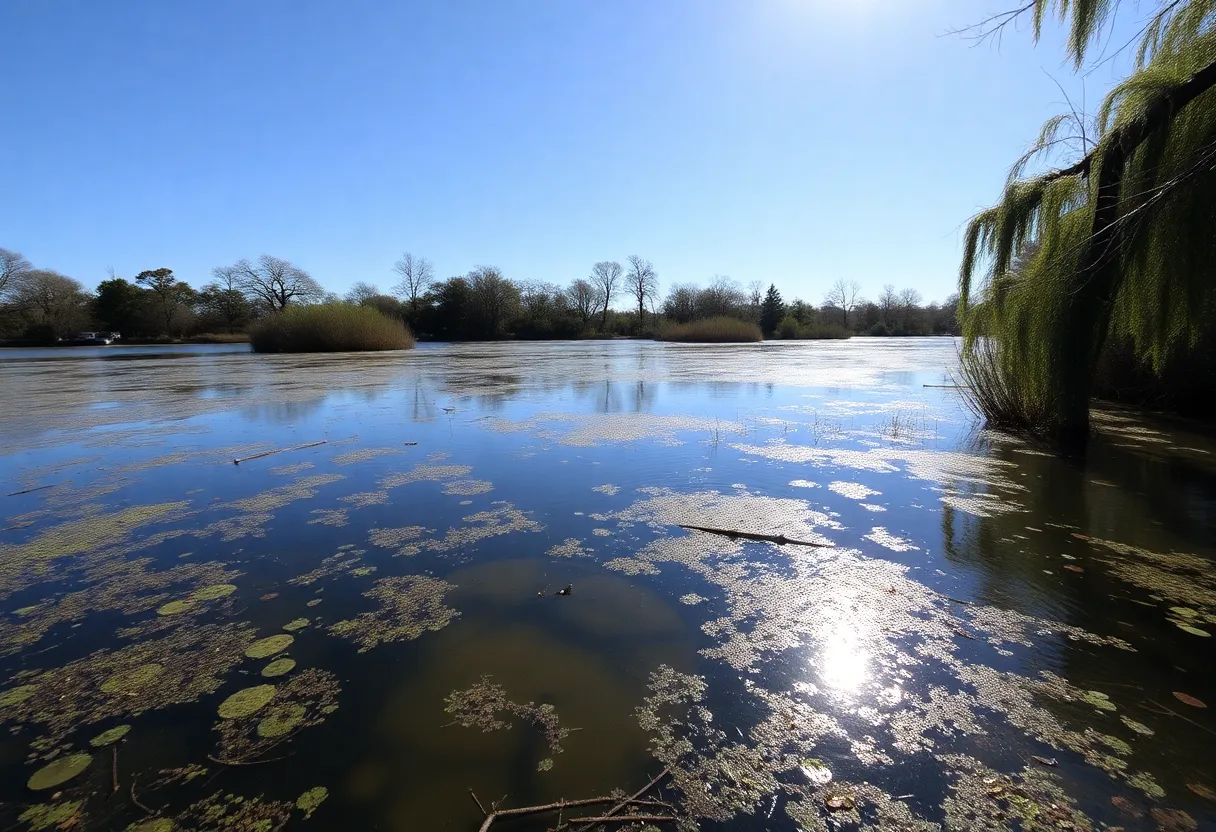News Summary
In August 2017, New Orleans experienced a troubling fish kill event in Beaver Park pond, sparking concerns among environmental authorities. Factors such as high water temperatures, cloudy weather, and recent storms have been identified as contributing to the hypoxic conditions leading to this ecological incident. The Louisiana Department of Wildlife and Fisheries is urging the public to report fish kills and highlighting the importance of maintaining healthy aquatic ecosystems.
New Orleans, Louisiana – A significant fish kill event occurred in August 2017, with hundreds of fish discovered dead in Beaver Park pond. The situation has raised concerns among local environmental authorities regarding the potential causes and implications for aquatic life in the area.
The Louisiana Department of Wildlife and Fisheries (LDWF) has indicated that factors such as high water temperatures, prolonged periods of cloudy weather, and recent storms are contributing to the fish kills. These environmental conditions adversely affect the oxygen levels in water, particularly in Louisiana’s shallow water bodies. Warm water typically holds less oxygen compared to cooler water, posing a threat to fish populations that require adequate oxygen for survival.
Hypoxic conditions, characterized by low levels of oxygen in the water, can develop due to a variety of factors, including:
- Low or stagnant water in ponds and other bodies of water.
- Excessive heat during the summer months.
- Heavy rainfall, which can introduce floodwaters from forested regions.
- Decaying vegetation and other debris that decompose in the water.
- Runoff that is murky or enriched with nutrients.
The bayous, marshes, and ponds of southern Louisiana are especially susceptible to oxygen depletion, which can vary in severity depending on the specific type of fish. Different species have disparate tolerances to hypoxia; for instance, while some fish may withstand lower oxygen levels, others, like shad, may face mortality under the same conditions.
In instances where fish kills occur in ponds, interventions such as aeration of the water can help alleviate hypoxic stress and improve survival rates for remaining fish. Additionally, natural processes involving a range of decomposers and scavengers, including microbes, insects, crawfish, crabs, alligators, turtles, raccoons, and birds, play a crucial role in cleaning up the deceased fish and restoring ecological balance.
As fall approaches, the natural transition to shorter days and cooler weather typically reduces the chances of further low-oxygen fish kills, allowing affected ecosystems to stabilize over time. Though fish kills can lead to temporary disruptions in both recreational and commercial fishing activities, most aquatic systems are capable of recovering without intervention.
Officials from LDWF highlight the importance of documenting fish kill incidents, regardless of whether the causes are attributed to natural conditions or human influences. The public is encouraged to report any occurrences of fish kills through dedicated channels, including the LDWF fish kill webpage, which helps authorities monitor and respond to these environmental challenges effectively.
By raising awareness about the environmental conditions that lead to fish kills, authorities aim to educate the public on the importance of maintaining healthy aquatic ecosystems and the actions that can be taken to mitigate adverse outcomes in the future.
Deeper Dive: News & Info About This Topic
- The Advocate: Fish Kills Caused by High Water Temperatures
- Arkansas Online: Beaver Lake Warming
- AGFC: Weekly Fishing Report
- Channel 3000: Woman Dead in Fire at Mobile Home Park
- Fox 6 Now: Beaver Dam Mobile Home Park Fire
- Wikipedia: Fish Kill
- Google Search: Fish Kills Causes
- Google Scholar: Fish Kills
- Encyclopedia Britannica: Fish Kill
- Google News: Fish Kills

Author: STAFF HERE NEWORLEANS WRITER
The NEW ORLEANS STAFF WRITER represents the experienced team at HERENewOrleans.com, your go-to source for actionable local news and information in New Orleans, Orleans Parish, and beyond. Specializing in "news you can use," we cover essential topics like product reviews for personal and business needs, local business directories, politics, real estate trends, neighborhood insights, and state news affecting the area—with deep expertise drawn from years of dedicated reporting and strong community input, including local press releases and business updates. We deliver top reporting on high-value events such as French Quarter Festival, New Orleans Jazz & Heritage Festival, and Essence Music Festival. Our coverage extends to key organizations like the New Orleans Chamber of Commerce and Greater New Orleans, Inc., plus leading businesses in energy, healthcare, and education that power the local economy such as Entergy, Ochsner Health, and Tulane University. As part of the broader HERE network, including HEREShreveport.com, we provide comprehensive, credible insights into Louisiana's dynamic landscape.




